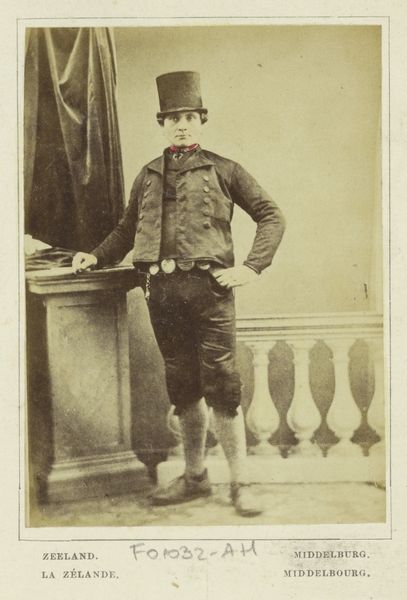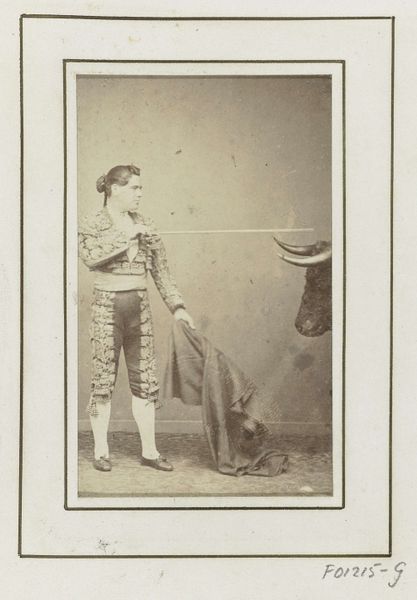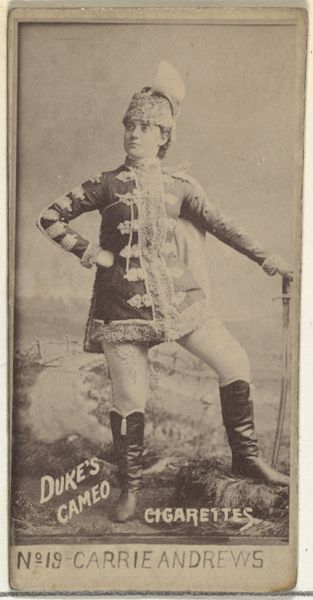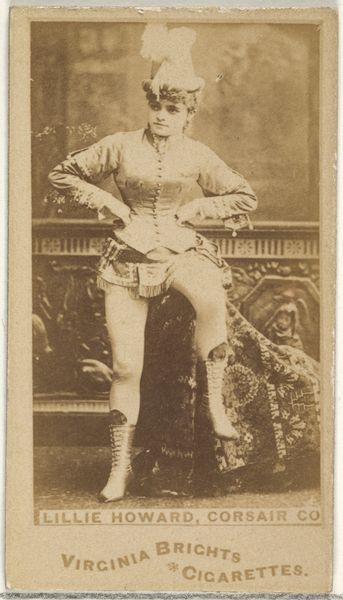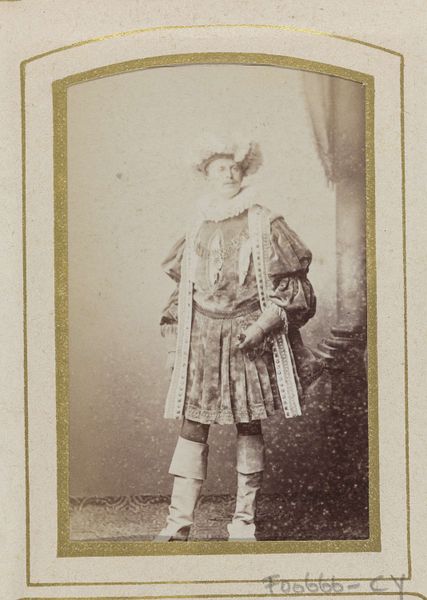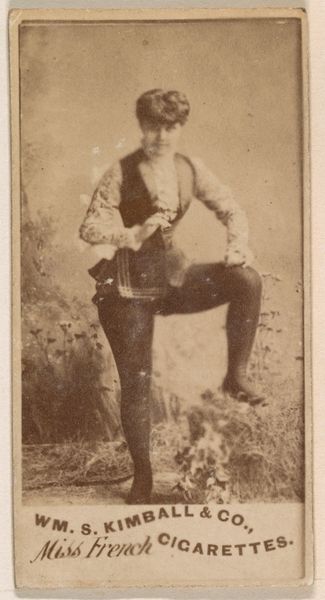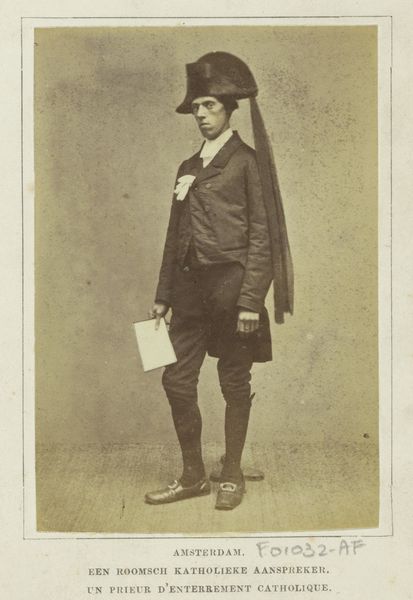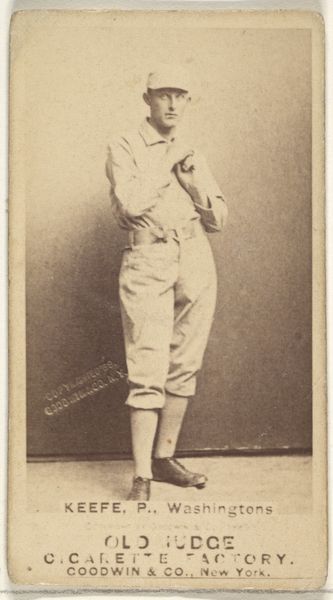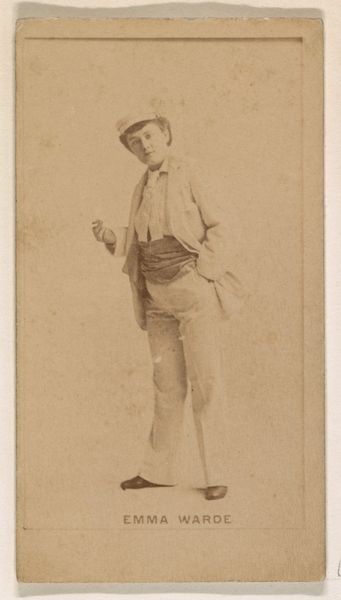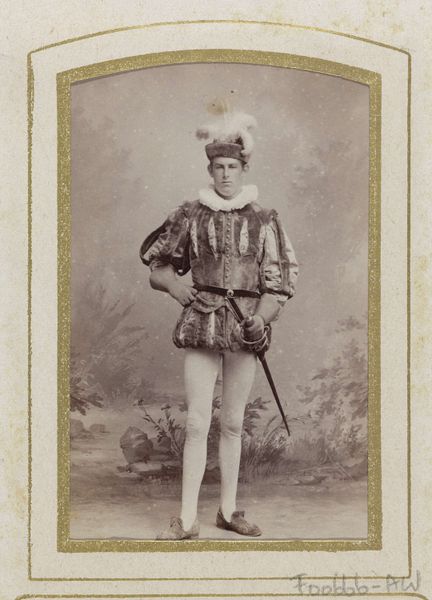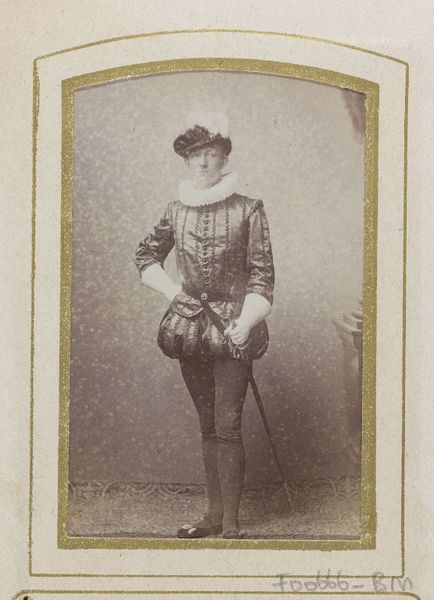
Portret van een onbekende man in Spaanse klederdracht, mogelijk een stierenvechter c. 1860 - 1875
0:00
0:00
juanlaurent
Rijksmuseum
photography
#
portrait
#
photography
#
historical photography
#
genre-painting
Dimensions: height 87 mm, width 52 mm
Copyright: Rijks Museum: Open Domain
Curator: At first glance, a sense of studied melancholy washes over me, despite the flamboyant attire. Editor: Indeed! We are looking at an albumen print by Juan Laurent, dating roughly from 1860 to 1875. It’s titled, "Portret van een onbekende man in Spaanse klederdracht, mogelijk een stierenvechter," or, "Portrait of an unknown man in Spanish costume, possibly a bullfighter." The piece currently resides here at the Rijksmuseum. Curator: That "possibly" hangs heavily, doesn't it? The costume feels performative, almost like a costume, which begs the question, does it signify real participation in bullfighting, or is it just romantic appropriation of cultural symbols? Editor: Exactly, there's a pronounced exoticism inherent to it. The way his jacket drapes, the tight breeches... These were highly potent visual tropes in the mid-19th century, associated with Spain’s somewhat mythical image on the European stage. Consider how photography itself contributed to constructing and circulating these stereotypes, and their legacy! Curator: The shadows are equally suggestive: a stage-like backdrop, hinting at theatricality. It's like he is posed to play with familiar themes in art—masculinity, drama, and the spectacle of violence all subtly interlinked. And note his ambivalent gaze; bravado mixed with a touch of something much softer...resignation, maybe? Editor: And bullfighting’s ritualistic dance—its choreography of life and death—offered a convenient platform for the rising visual narratives centered around national identity and what it means to *be* Spanish at this juncture. This photographer—Laurent—would definitely have been part of that conversation. Curator: The ambiguity then invites us to interpret what bullfighting and associated garments symbolized beyond Spain too: what aspirations or anxieties they mirrored about class, masculinity, power dynamics. After all, that pose might equally be perceived as vulnerable depending upon viewer. Editor: A point well taken. One begins to see in this portrait the complex, occasionally contradictory desires swirling in the public consciousness of the era—the need for strong icons, the attraction of supposed cultural authenticity… I must rethink my initial exoticism reading in light of deeper political projections! Curator: Agreed! Its simplicity opens up the work to diverse perspectives across space and time which helps to underscore not just art’s transformative social powers over generations, but visual iconography's inherent instability also, as ideas evolve continuously about culture.
Comments
No comments
Be the first to comment and join the conversation on the ultimate creative platform.
